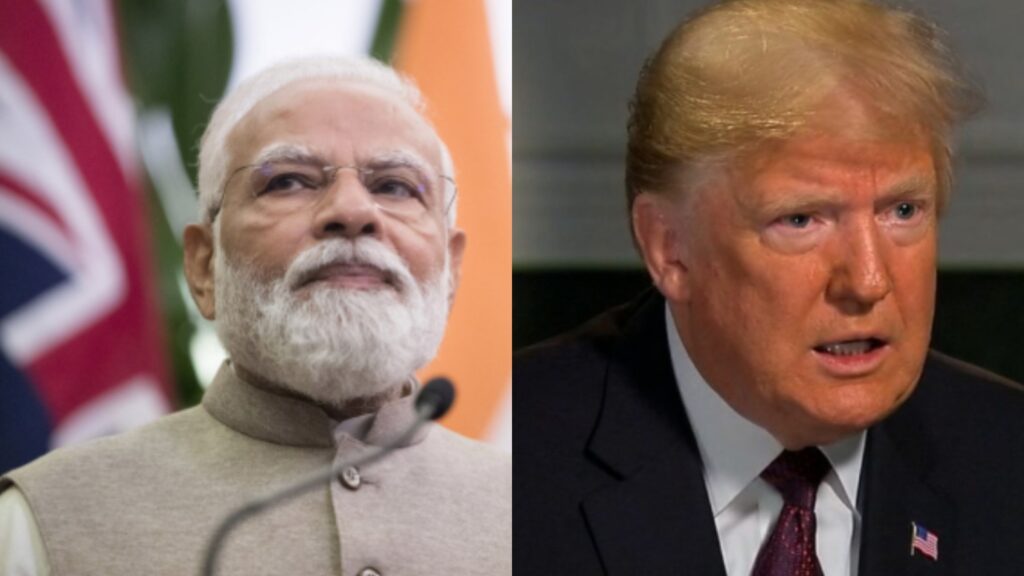Trump’s 50% Tariff on Indian Goods: What It Means for India’s Future
Trump’s 50% tariff on Indian goods has major implications. Learn how this move impacts India’s economy, trade relations, and what it means for consumers and businesses
Breaking News: Trump Imposes a 50% Tariff on Indian Imports – What’s Next?
It’s not every day that we see the dynamics of international trade stir up this much drama. But here we are – President Donald Trump has dropped a bombshell with a massive 50% tariff on Indian goods. The stakes are high, and tensions are brewing between the U.S. and India, shaking up trade relations that have been in motion for decades.
But, what’s driving this move? Why India? And what does it all mean for the future of Indian exports, the global trade balance, and even your next online shopping spree? Let’s unpack it.
The Why Behind the Tariff
Before we dive into what this 50% tariff means, let’s take a step back and explore the why behind this bold decision. According to Trump, India’s continued purchase of Russian oil is at the heart of it. The U.S., under Trump’s leadership, has been outspoken about Russia’s role in global politics, particularly its invasion of Ukraine. The U.S. has been working hard to isolate Russia economically, imposing sanctions and leveraging its influence on allies to join the pressure.
India, however, has continued to buy Russian oil, and in recent months, has increased its imports. This has drawn the ire of the U.S., which sees it as a blatant defiance of Western pressure to cut ties with Russia. For India, Russian oil is not just cheaper; it’s crucial to meet its growing energy demands. But to the U.S., this act is more than just an economic transaction. It’s seen as a diplomatic statement.
The 50% Tariff: A Double-Edged Sword?
So, what does a 50% tariff mean for India? The effects could ripple through multiple sectors – from the tech industry to agriculture, and even the pharmaceutical sector, which relies on U.S. markets.
1. Tech and Software Services
India is a tech powerhouse, with major exports of IT services, software solutions, and tech products to the U.S. A tariff on these goods could slow down business deals, disrupt supply chains, and increase the cost of tech products for consumers. While India’s tech companies are relatively resilient, this tariff could mean a loss of competitiveness in the global market.
2. Pharmaceuticals and Medical Devices
India is often dubbed the “pharmacy of the world,” especially when it comes to generic medications. The U.S. has long been one of its largest markets. However, with a 50% tariff slapped on Indian pharmaceutical products, the cost of medicines might rise, impacting both the Indian industry and U.S. consumers who rely on affordable generic drugs.
3. Agriculture: A Bitter Pill
Another hit could come for Indian agricultural exports. India is a major exporter of items like rice, spices, tea, and fruits. These goods, often sold at competitive prices, might now face stiff competition in the U.S. market, making it harder for Indian farmers to thrive. If the tariff remains in place, the cost of exporting these goods could skyrocket, leading to potential losses for both Indian farmers and U.S. consumers who rely on these products.
4. Automobile Industry
While India doesn’t export as many cars to the U.S. as countries like Japan or Germany, its automobile industry is growing. The U.S. tariff could hamper the exports of Indian-made cars and auto parts, slowing down growth for companies that depend on U.S. sales.
The Economic and Political Fallout
While the immediate impact is clear – tariffs on goods and disruptions to the trade flow – the political fallout could be even more significant. India has been strengthening its strategic relationship with the U.S. over the past few decades. This tariff could strain those diplomatic ties, forcing India to reassess its global partnerships.
India, after all, isn’t the only country looking to expand its influence. China, Russia, and even Europe are making moves in the global economic chess game. India could potentially turn to alternative markets for its goods, but that doesn’t mean the shift would be easy or without consequence. Plus, there’s the very real possibility of retaliatory tariffs from India, which could send the situation spiraling into a full-blown trade war.
One major issue at play here is sovereignty. The U.S. expects India to align itself with Western interests, but India’s foreign policy is often rooted in non-alignment, particularly when it comes to relations with countries like Russia and China. The message here is clear – India will make decisions based on its national interest, and no amount of pressure will change that.
What’s Next for India’s Trade?
So, what happens now? If the U.S. persists with the tariff, India could be forced to explore new trade partnerships. The Indian government might seek better deals with Europe, Southeast Asia, and Russia. It could also ramp up its efforts to diversify its export base, reducing its reliance on the U.S. market.
But there’s another layer to this: India’s growing middle class and demand for products like smartphones, luxury goods, and high-end technology might prompt the country to become more self-sufficient in certain sectors. The government has been pushing “Atmanirbhar Bharat” (self-reliant India) as a national initiative, and this situation could further accelerate that movement.
The Bigger Picture: A Shift in Global Trade Dynamics?
Looking beyond India’s borders, this tariff is a part of a much larger global shift. Protectionism is on the rise globally, with many countries reconsidering the nature of free trade and looking inward to safeguard their economic interests. It’s a delicate balancing act between global interdependence and national sovereignty, and countries like India are caught in the middle.
Will India bend to U.S. pressure? Or will it find new trade alliances and move towards greater self-reliance? Only time will tell. But one thing is clear: this tariff is more than just an economic move – it’s a signal of the changing dynamics in global geopolitics.
For the everyday consumer, the impact of the 50% tariff may not be immediately obvious. However, if you’re a tech enthusiast, a regular shopper on e-commerce sites, or someone who relies on affordable medications, you could soon feel the pinch.
India’s response to this tariff will set the tone for future international relations and the broader economic landscape. If you’re concerned about rising costs or the potential impact on your business, it’s a good time to stay informed and adapt to the shifting tides.
What are your thoughts on the Trump administration’s tariff on Indian goods? How do you think this will play out in the long run? Share your opinions with us in the comments below – let’s continue the conversation.
US-India Trade Tensions: Trump’s Tariff Threats Spark Global Concerns –







https://t.me/official_1win_aviator/39
https://t.me/official_1win_aviator/284
https://t.me/official_1win_aviator/224
You have brought up a very wonderful details , thankyou for the post.
https://t.me/Best_promocode_rus/2862
Keep up the wonderful piece of work, I read few content on this web site and I think that your site is real interesting and contains bands of superb info .
Tại slot365 login, người chơi có thể lựa chọn nhiều phương thức thanh toán khác nhau như: thẻ ngân hàng nội địa, ví điện tử, và các cổng thanh toán quốc tế. Điều này giúp dễ dàng lựa chọn phương thức phù hợp với nhu cầu cá nhân mà không gặp khó khăn trong quá trình giao dịch.
Tại slot365 login, người chơi có thể lựa chọn nhiều phương thức thanh toán khác nhau như: thẻ ngân hàng nội địa, ví điện tử, và các cổng thanh toán quốc tế. Điều này giúp dễ dàng lựa chọn phương thức phù hợp với nhu cầu cá nhân mà không gặp khó khăn trong quá trình giao dịch.
Tại slot365 login, người chơi có thể lựa chọn nhiều phương thức thanh toán khác nhau như: thẻ ngân hàng nội địa, ví điện tử, và các cổng thanh toán quốc tế. Điều này giúp dễ dàng lựa chọn phương thức phù hợp với nhu cầu cá nhân mà không gặp khó khăn trong quá trình giao dịch.
Hãy cùng chúng tôi khám phá 5+ yếu tố làm nên thương hiệu cá cược trực tuyến hàng đầu thị trường đăng ký 188v.